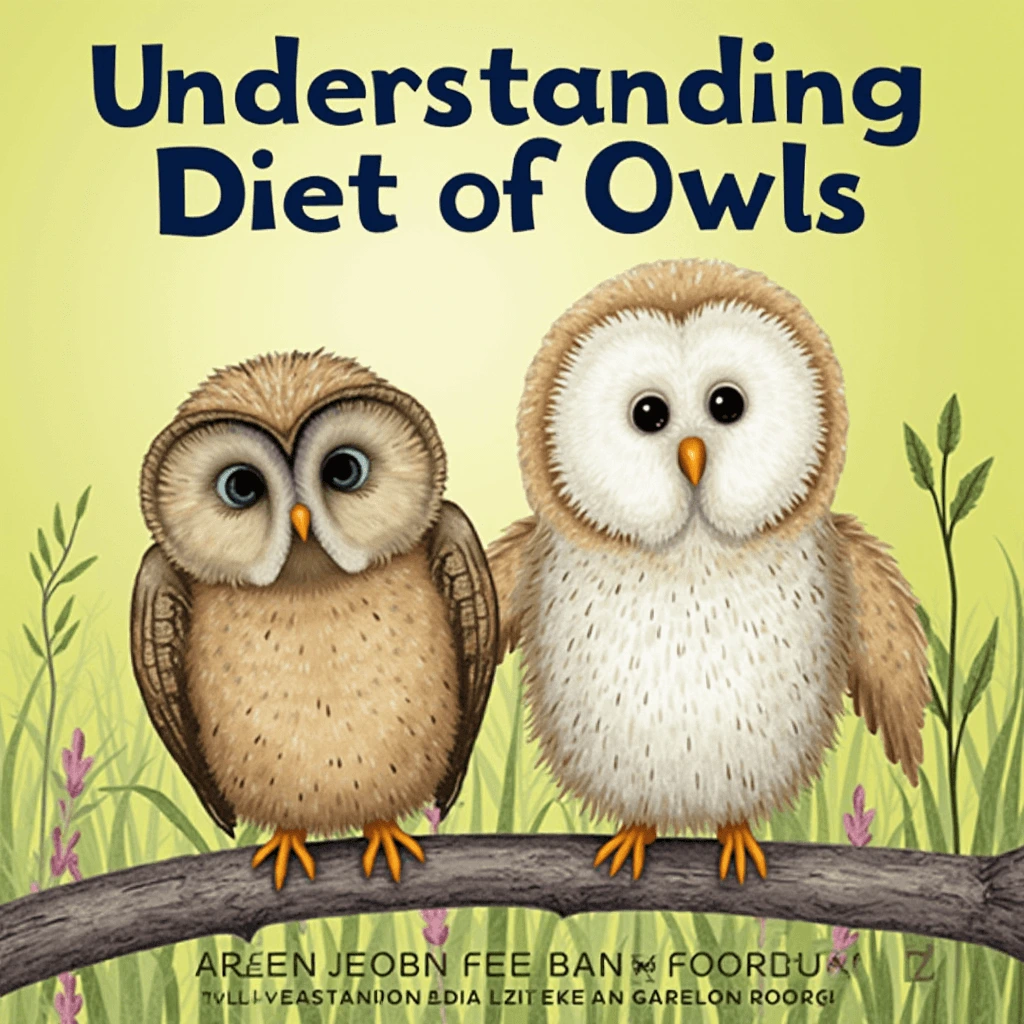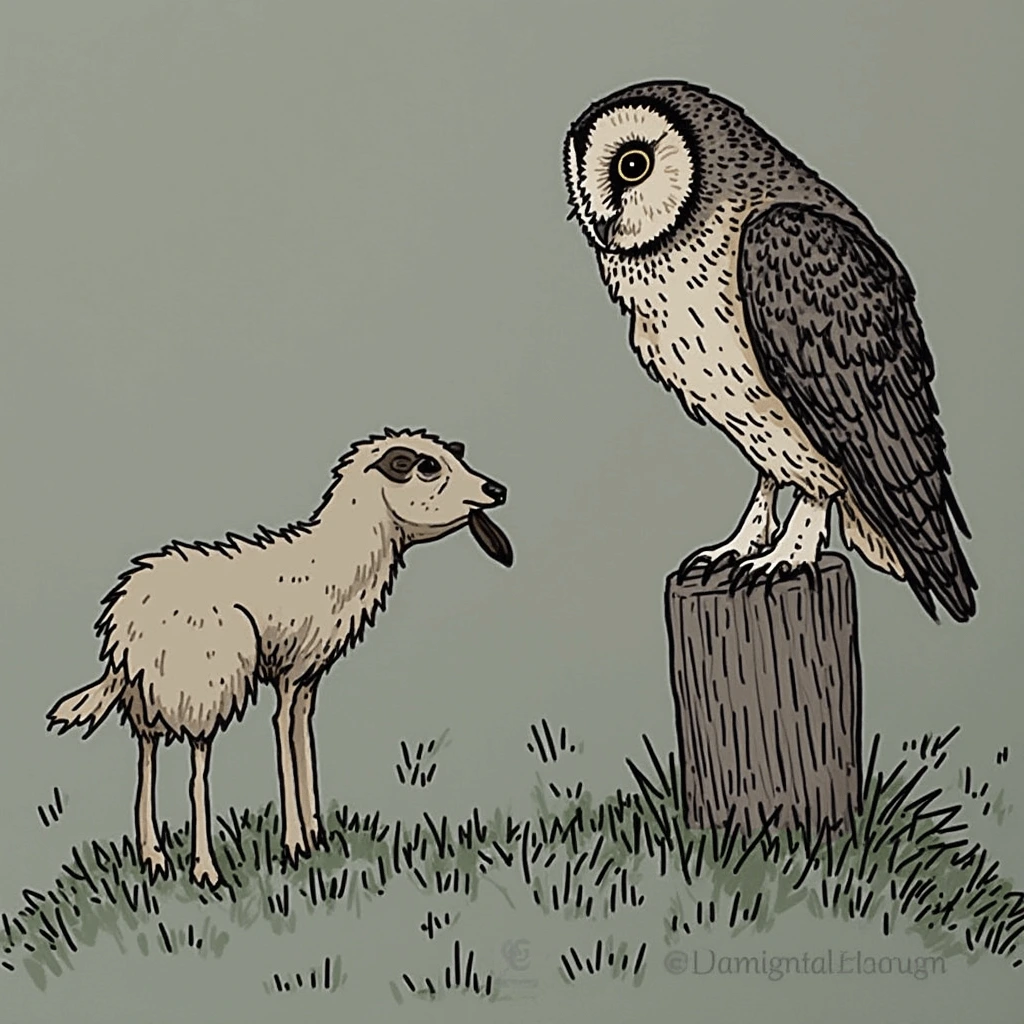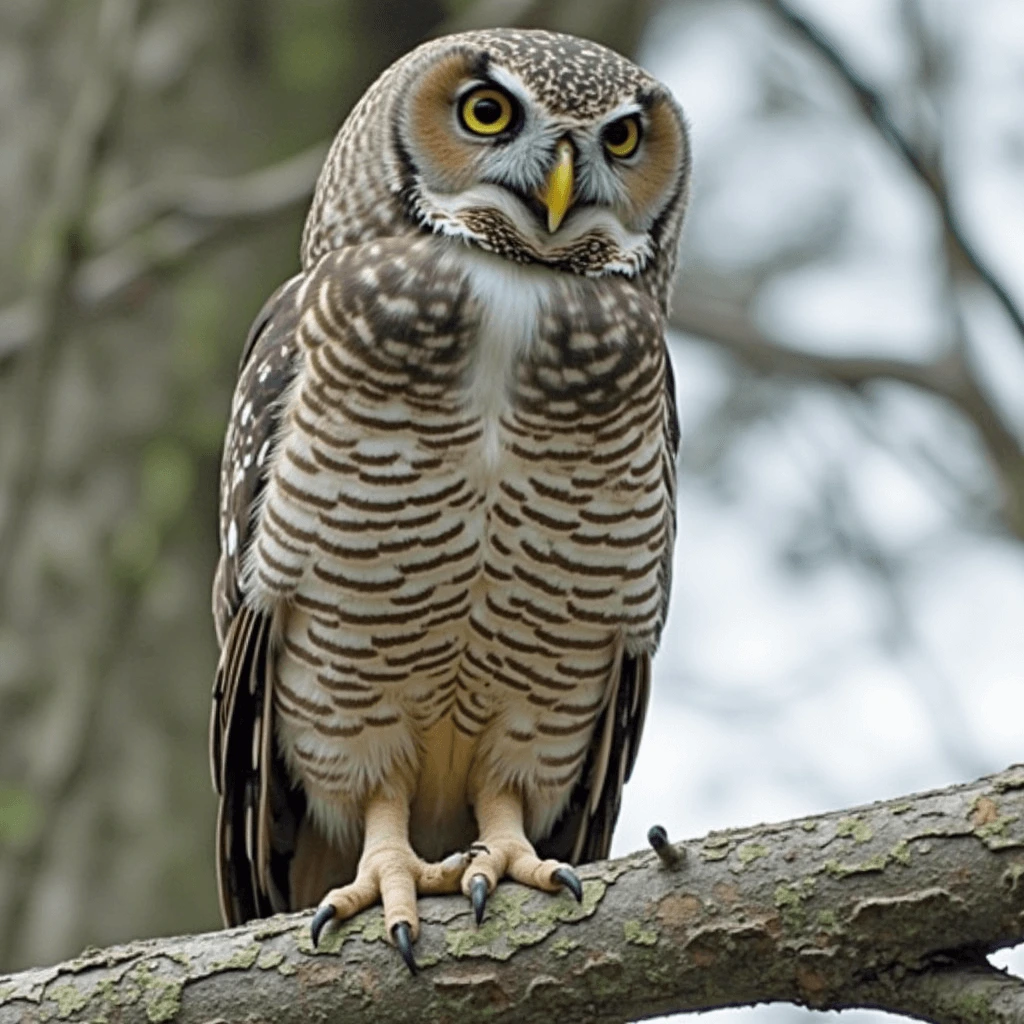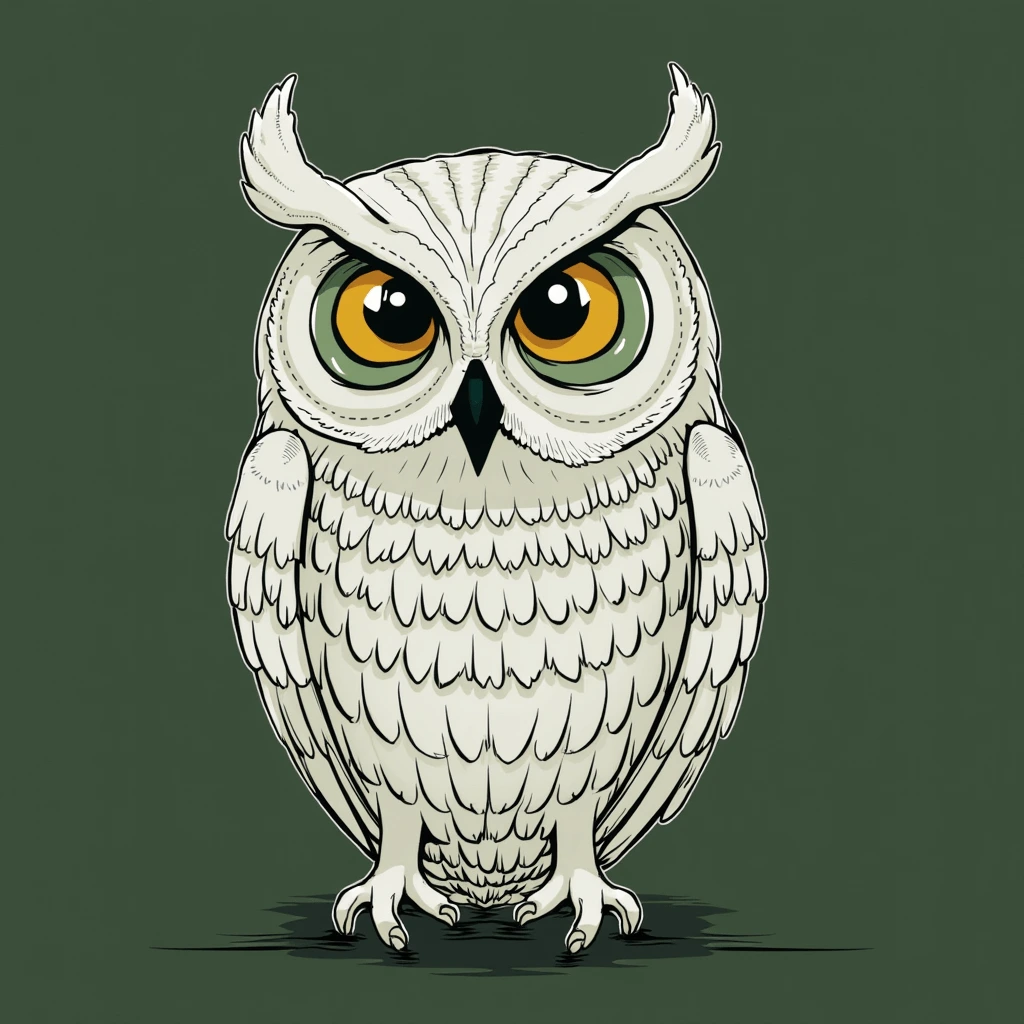Introduction: Do Owls Eat Sheep?
Owls have long been symbols of mystery and wisdom, their silent wings slicing through the night as they hunt their prey. But when it comes to livestock like sheep, many people wonder: Do owls eat sheep? This question often arises from folklore, exaggerated accounts, or misunderstandings about owl behavior. While owls are indeed skilled predators, the idea of them preying on large animals like sheep might be more myth than reality.
In this article, we’ll explore the truth behind the diet of owls and their interactions with livestock. We’ll dive into the common myths, the actual predatory habits of owls, and whether or not farmers and ranchers should be concerned about these nocturnal hunters targeting their sheep. By the end, you’ll have a clear understanding of where owls fit in the food chain and the role they play in the ecosystem.
So, let’s separate fact from fiction and uncover the truth about owls and their supposed appetite for sheep!
TL;DR
Owls are highly skilled nocturnal hunters, but they primarily prey on small animals like rodents, insects, and birds. The idea that owls eat sheep is a myth, likely stemming from misunderstandings or folklore. While larger owls, such as the Great Horned Owl, might target small livestock like lambs in rare cases, most owls do not pose a significant threat to sheep or other large animals.
Understanding the Diet of Owls

Owls are fascinating nocturnal predators, known for their sharp hunting skills and adaptability to various ecosystems. To understand whether they could target livestock like sheep, we must first delve into their dietary habits, hunting strategies, and physical capabilities.
What Do Owls Eat?
Owls are carnivorous birds, and their diet typically depends on their species, size, and habitat.
- Primary Prey: Most owls feed on small animals such as rodents (mice, voles, and rats), birds, insects, frogs, and lizards. These creatures make up the bulk of their diet because they are easier to catch and consume.
- Species-Specific Diets:
- Barn Owls primarily consume small mammals like mice and shrews, often hunting in open fields.
- Great Horned Owls are more versatile, preying on larger animals like rabbits, squirrels, and occasionally smaller birds of prey.
- Snowy Owls target lemmings and other small Arctic mammals.
- Opportunistic Feeders: Owls are not picky eaters and will consume what is readily available in their environment, provided it matches their hunting capabilities.
Do Owls Prey on Large Animals?
While owls are skilled hunters, their ability to prey on large animals is limited by their size and strength.
- Large Prey Instances:
- Some larger owls, like the Great Horned Owl, have been known to hunt prey like young rabbits or small domestic pets. However, these occurrences are rare and often exaggerated in folklore or anecdotal reports.
- Owls use their powerful talons to capture and immobilize prey, but even the strongest species are unlikely to handle animals much larger than a rabbit.
- Physical Constraints:
- Owls are not built to kill or carry large animals. Their lightweight bodies and hollow bones allow them to fly silently, but they cannot support the weight of livestock such as sheep.
How Owls Hunt: Adaptations and Skill
Owls are highly efficient hunters, with unique adaptations that allow them to thrive as nocturnal predators:
- Silent Flight:
- Specialized feathers reduce noise, enabling owls to approach their prey stealthily. This silent flight is one of their most effective tools for surprise attacks.
- Exceptional Vision:
- Owls have large, forward-facing eyes that provide excellent depth perception and night vision. Their eyes are so adapted to low-light conditions that they can spot the smallest movements even in near-total darkness.
- Acute Hearing:
- Many owl species rely on their keen hearing to locate prey. Some, like the Barn Owl, have asymmetrical ear placements, allowing them to detect sound with incredible precision.
- Strong Talons and Beaks:
- Once an owl catches its prey, its sharp talons and hooked beak make quick work of capturing and consuming it.
Owls are perfectly designed for hunting small to medium-sized prey, but their physical and behavioral traits make them ill-suited for targeting livestock like sheep. Understanding these limitations helps dispel myths and highlights their important role in controlling populations of smaller animals.
Myth or Reality: Can Owls Eat Sheep?

The idea that owls eat sheep has persisted in myths, stories, and rural folklore for generations. While owls are undeniably skilled hunters, the notion that they prey on large animals like sheep is more fiction than fact. In this section, we’ll explore the origins of this myth, the physical limitations of owls, and the real threats sheep face from predators.
The Origins of the Myth
The belief that owls hunt sheep likely stems from a combination of cultural folklore and misinterpreted behaviors.
- Folklore and Superstitions:
- In many cultures, owls are seen as omens or mystical creatures, often associated with death, darkness, or misfortune. These beliefs may have led people to exaggerate their predatory capabilities.
- In some rural areas, reports of owls attacking small lambs may have been conflated with larger livestock, fueling misconceptions.
- Misinterpreted Owl Behavior:
- Owls are often seen near farms or grazing fields because these areas attract rodents, their primary prey. Farmers might mistakenly assume the owl is eyeing their livestock, when in reality, it’s hunting smaller animals.
- Instances of owls scavenging on already deceased animals could also be misinterpreted as active predation.
Physical Constraints of Owls
While owls are apex predators in their food chain, their physical characteristics make them unsuitable for hunting large prey like sheep.
- Body Size and Strength:
- Even the largest owls, such as the Great Horned Owl or the Eurasian Eagle-Owl, typically weigh only 4–6 pounds. This is far too small to attack or carry away a sheep, which can weigh between 50–300 pounds depending on its age and breed.
- Talons and Beak Limitations:
- An owl’s talons are designed to grasp and kill small to medium-sized animals, such as rodents or birds. They lack the size and strength to penetrate the thick hide or fleece of a sheep.
- Energy Expenditure:
- Owls are efficient hunters, and targeting prey significantly larger than themselves would require an unsustainable amount of energy, making it an impractical choice.
Actual Threats to Sheep
While owls pose little to no risk to sheep, there are other predators that farmers should be aware of.
- Primary Predators of Livestock:
- Wolves, coyotes, and mountain lions are common predators that actively target sheep. Unlike owls, these animals are equipped with the size and strength to take down large prey.
- Large birds of prey, such as eagles, may occasionally attack lambs or small livestock, but this is also rare.
- Signs of Predation:
- Bite marks on the neck or hindquarters, drag marks, and evidence of struggle are indicators of attacks from larger predators. Owl predation would not leave such marks and is unlikely to occur.
Rare Cases of Owl Interaction with Livestock
Although rare, there have been anecdotal reports of large owls attacking very young or small livestock, such as lambs.
- When It Happens:
- Such incidents are typically limited to areas where large owl species, like the Great Horned Owl, overlap with farms that have unprotected lambs or poultry.
- Even in these cases, owls are more likely to target smaller, easier prey like rodents near livestock enclosures.
- How Farmers Misinterpret Owl Activity:
- Farmers may notice an owl circling or perching near sheep and assume predatory intent. However, this behavior is usually a sign that the owl is hunting rodents attracted to livestock feed or waste.
Owls are remarkable predators, but their diet and hunting methods make them unsuitable for preying on large animals like sheep. Understanding the myths and truths surrounding these nocturnal hunters can help us better appreciate their role in the ecosystem and dispel unnecessary fears about their behavior.
Larger Owls and Potential Risks to Livestock

When discussing whether owls eat sheep, many people might immediately think of larger owl species, such as the Eurasian Eagle-Owl or the Great Horned Owl. These impressive birds of prey are among the largest owls in the world, and their size and strength lead some to believe they could potentially hunt livestock like sheep. However, while these owls can take down relatively large prey, such as hares, rabbits, and even foxes, the reality is that fully grown sheep are far too large and heavy for even the most powerful owls to hunt effectively.
So, do owls eat sheep? The answer remains no. Larger owls, despite their strength and hunting skills, typically prey on smaller animals and do not pose a significant threat to mature livestock. The main risk from larger owls lies in their ability to attack small animals or young livestock, such as lambs or chickens, particularly if they are left unprotected in vulnerable areas.
The Largest Owl Species
Several owl species are considered apex predators within their ecosystems, capable of taking down larger prey compared to smaller owls.
- Great Horned Owl (Bubo virginianus):
- Native to the Americas, this owl is one of the most powerful predators among owls.
- Known for its versatility, the Great Horned Owl preys on rabbits, skunks, and even other birds of prey, such as hawks.
- Weighing around 3–5 pounds, it has the strength and talon pressure to subdue prey larger than most other owls can manage.
- Eurasian Eagle-Owl (Bubo bubo):
- One of the largest owl species globally, found in Europe and Asia.
- These owls are known to hunt small deer, foxes, and large hares in the wild.
- With a wingspan exceeding six feet and powerful talons, they can take down prey significantly larger than themselves.
- Snowy Owl (Bubo scandiacus):
- Inhabiting the Arctic, the Snowy Owl primarily preys on lemmings and other small mammals but is also capable of catching birds and larger prey during food scarcity.
While these species can hunt larger animals, their natural prey choices do not include livestock such as sheep.
Risks to Smaller Livestock
The risk of owls targeting livestock is generally limited to smaller, more vulnerable animals, such as lambs, poultry, or newborn goats.
- Targeted Animals:
- Lambs or kids (young goats) weighing less than 10 pounds may occasionally fall within the size range of prey for larger owl species.
- Free-range chickens or turkeys are far more common targets due to their smaller size and accessibility.
- Specific Situations:
- Larger owls may be attracted to farms with unprotected enclosures or areas where lambs are left unattended during nighttime hours.
- Farms located near forests or open fields—ideal owl habitats—might see more owl activity.
How Owls Hunt and Limitations
Even for the largest owl species, physical and behavioral constraints prevent them from regularly preying on livestock.
- Strength vs. Weight:
- While owls possess powerful talons, they are not designed to lift or carry animals much heavier than themselves.
- A Great Horned Owl, for instance, can carry prey weighing up to 3 pounds in flight but cannot transport anything heavier.
- Energy Efficiency:
- Owls are opportunistic predators, focusing on prey that provides the most energy for the least effort. Targeting a lamb or other livestock would require substantial energy expenditure, making it an impractical choice compared to smaller prey.
- Fighting Back:
- Even young livestock can fight back against an owl attack, potentially injuring the owl and discouraging further attempts.
Protecting Livestock from Owls
While the likelihood of owl predation is minimal, farmers and livestock owners can take simple precautions to prevent unwanted interactions.
- Secure Enclosures:
- Use well-constructed pens with overhead netting or roofing to protect lambs and poultry, especially at night.
- Lighting:
- Installing motion-sensitive lights can deter owls from approaching livestock areas, as they prefer hunting in darkness.
- Companion Animals:
- Guard animals like dogs, llamas, or donkeys are excellent at protecting livestock from all types of predators, including birds of prey.
- Rodent Control:
- Reducing rodent populations near farms can discourage owls from frequenting the area, as rodents are a primary food source.
Rare and Misinterpreted Cases
While rare, there are occasional anecdotal reports of large owls attacking lambs or other small livestock.
- Misinterpretations:
- Farmers might observe an owl circling overhead or perching near livestock and mistakenly assume it is hunting their animals. In reality, the owl is likely targeting rodents or scavenging.
- Scavenging Behavior:
- Owls may feed on carcasses of dead livestock, leading to the false perception that they hunted the animal.
In conclusion, while larger owls possess the physical traits to hunt small livestock, such instances are exceedingly rare. Their diet overwhelmingly consists of wild prey, and any perceived risk to livestock can be effectively managed with proactive measures. Understanding these nuances helps farmers coexist with owls, which play a crucial role in controlling rodent populations.
Debunking Common Myths About Owls

Owls are fascinating creatures shrouded in mystery, often portrayed as wise and mystical beings in folklore and literature. However, these perceptions have also led to widespread myths and misconceptions about their behaviors and capabilities. In this section, we’ll tackle some of the most common myths about owls, explore their origins, and reveal the truth behind these misconceptions.
Owls Are Harbingers of Death
- The Myth: In many cultures, owls are seen as omens of death or bad luck. Their haunting calls at night and nocturnal nature often associate them with darkness and mystery.
- The Truth: While owls are nighttime hunters with eerie calls, they are not supernatural creatures. Their presence usually indicates a healthy ecosystem, as they play a crucial role in controlling rodent populations.
- Cultural Context:
- In ancient Rome, owls were believed to predict death, but in Native American cultures, they were sometimes seen as protectors of the spirit world.
- Today, wildlife enthusiasts recognize owls as vital members of their habitats, not bearers of ill fate.
Owls Can Carry Off Large Animals Like Sheep
- The Myth: One persistent misconception is that owls, particularly larger species, can prey on livestock like sheep or goats.
- The Truth: Owls are physically incapable of hunting or carrying off animals as large as sheep. Even the largest species, like the Eurasian Eagle-Owl, can only manage prey up to a few pounds.
- Why the Myth Exists:
- Farmers may misinterpret an owl’s presence near livestock as predatory behavior.
- Instances of owls scavenging on dead livestock may also contribute to this misunderstanding.
All Owls Are Nocturnal
- The Myth: It is commonly believed that all owls are strictly nocturnal, only active at night.
- The Truth: While many owl species are nocturnal, others are crepuscular (active during dawn and dusk) or even diurnal (active during the day).
- Examples of diurnal owls include the Snowy Owl and the Burrowing Owl.
- These adaptations allow them to thrive in diverse habitats, from Arctic tundras to open grasslands.
Owls Are Silent and Solitary Hunters
- The Myth: Owls are often depicted as stealthy, solitary hunters that remain silent unless calling for a mate.
- The Truth: While owls are indeed quiet fliers due to specialized feathers, they can be highly vocal, especially during breeding seasons.
- Some species, like the Barred Owl, are known for their loud, distinctive calls.
- In certain conditions, owls may hunt in pairs or as part of family groups.
Conclusion: Do Owls Eat Sheep?
Owls are remarkable predators with unique adaptations that make them skilled hunters of small prey. However, the idea that owls hunt or eat sheep is firmly in the realm of myth rather than reality. Even the largest owl species lack the physical strength and capability to target animals as large as sheep.
These misconceptions likely arise from misunderstandings about owl behavior or rare instances of scavenging. By examining the diet, habits, and ecological roles of owls, it becomes clear that they are far more beneficial to farmers and ecosystems than they are a threat. Owls play a vital role in controlling rodent populations and maintaining a balanced environment.
Understanding the truth about these majestic birds not only helps debunk myths but also fosters appreciation for their role in nature. Instead of fearing them, we can admire owls for the fascinating creatures they truly are—guardians of the night and vital players in our ecosystems.
Read Also: Is Bread Safe for Birds? Everything You Need to Know

